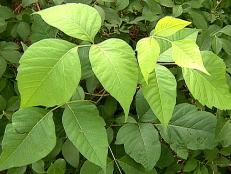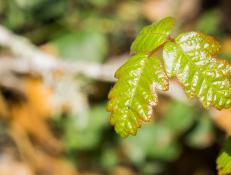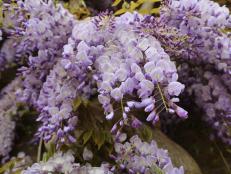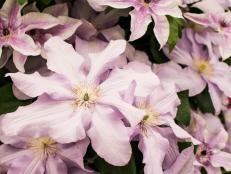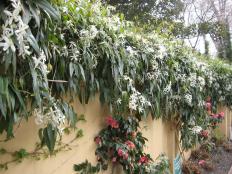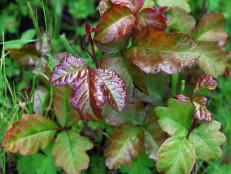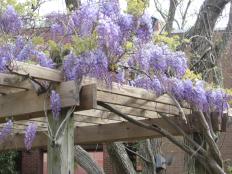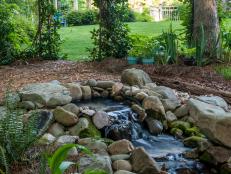How to Identify Poison Ivy
Follow these tips for identifying and then getting rid of this bothersome plant.
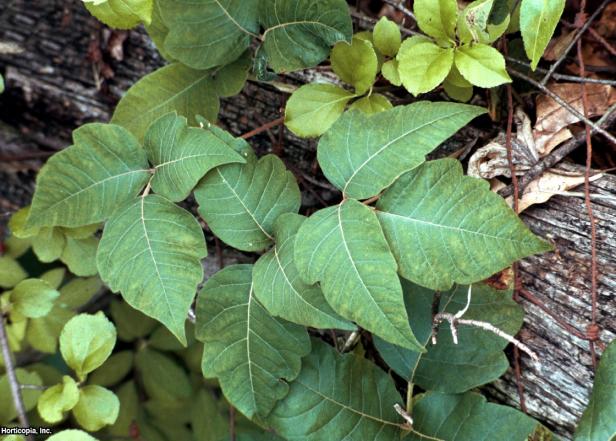
Poison Ivy (Toxicodendron radicans) is commonly found on fences and walls or may grow up the trunks of trees.
I’ve known the phrase "leaves of three, let it be" since I was a little kid. But as it turns out, a lot of harmless plants – like aromatic sumac (skunkbush), Virginia creeper and boxelder – are commonly mistaken for poison ivy. So how can we tell which is which, whether we’re tromping through the woods or puttering in our own backyards?
Tips to Identify Poison Ivy
- Poison ivy likes to climb. It’s commonly found on fences and walls or may grow up the trunks of trees.
- It has a versatile shape. You may see poison ivy growing as a shrub, as a single plant, as ground cover or as a thick wall of green.
- Check the vine. Thick, hairy vines are a hallmark of poison ivy plants. Virginia creeper vines are also thick, but will be covered in light-colored tendrils rather than rough hair.
- Look for berries. Poison ivy vines will sprout small opaque white or yellowish berries that look like tiny pumpkins. The berries of a Virginia creeper are blue-black, while skunkbush berries are dark red and hairy.
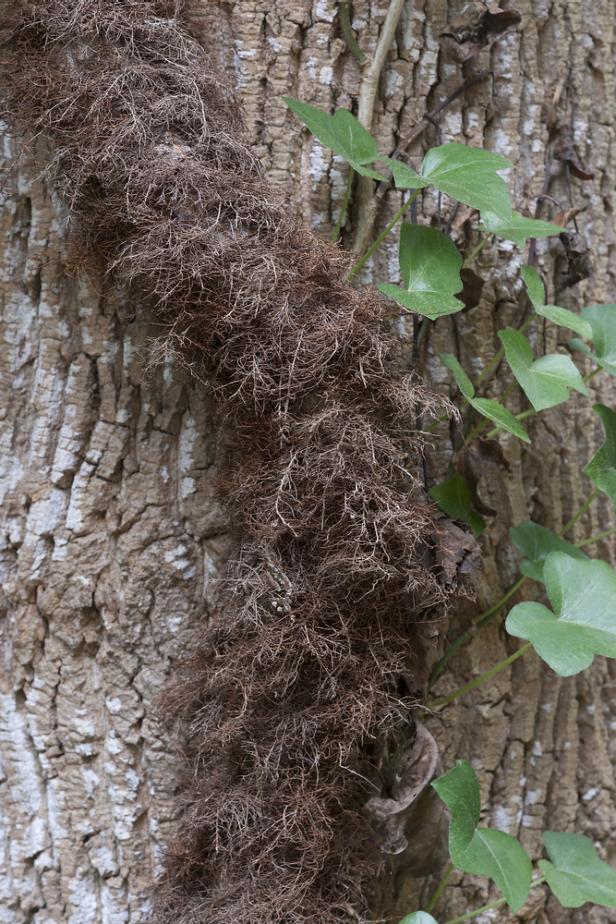
Shutterstock/Nikolay Kurzenko
Poison ivy has thick, hairy vines.
Poison Ivy Leaves
Poison ivy’s leaves have some defining characteristics to help you tell them apart from those of other plants:

Julie Martens Forney
The old adage of "leaflet three, let it be" provides a clue to identifying poison ivy, which has three leaflets comprising each leaf.
- Poison ivy will always have three leaflets at the end of a long stem. Virginia creeper actually has five leaves per stem, though younger plants may only show three. Boxelder sometimes has three leaves early in spring, but will have five to seven later in the season accompanied by "helicopter" seeds.
- Poison ivy leaves follow a distinctive leaflet pattern. You’ll see one main leaflet at the end of each leaf stalk, with two smaller leaflets opposite one another below it on very short stalks. Sometimes the two opposite leaflets are shaped like mittens.
- Poison ivy leaflets can be smooth, rounded or spiny. They are green in the early season but will turn bright red in the fall. Poison ivy leaves are often waxy and shiny, but may appear dull, particularly after it rains.
If you’ve identified poison ivy in your yard, you can consider letting it be and teaching your family to avoid it. Humans are the only animals bothered by poison ivy, and if it’s not in an area where people regularly walk or play, you may be better off just leaving it alone and instructing children and guests to steer clear rather than handling it.
If you’re not willing to live with poison ivy, try the following:
- Wearing gloves and long sleeves, pull out the plants. Plan to pull out again soon as the first pass will likely not get it all.
- Or, use a commercial herbicide concentrated to three times the potency of normal (you’ll need the extra power!). Both chemical-based and organic herbicides can kill poison ivy.
- Either method will be more effective if you dig 8-10 inches into the ground to remove the roots. Wear gloves and long sleeves, as the plant’s roots can also contain irritants.
- After digging or pulling out poison ivy, consider laying down newspapers and/or mulch to smother any remaining vines or seeds.
Note: Wearing gloves and long sleeves is crucial while working with poison ivy, even if you don’t think you’re allergic to the plant. Sensitivities can develop over time. Take care not to touch your face or any other part of your body with the contaminated gloves.
Before you wash your hands, rinse them with white vinegar, mineral spirits or alcohol. Then wash well with cold, soapy water. The faster you rinse your skin with cool water, the less chance you’ll be affected by the poison ivy. Remember that your clothes and shoes will be contaminated, and will need to be washed!








